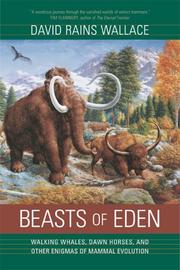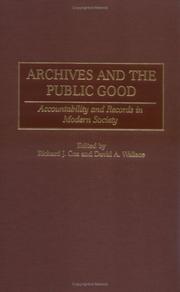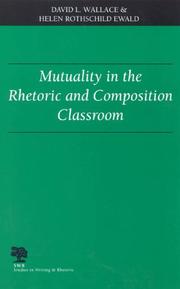| Listing 1 - 8 of 8 |
Sort by
|
Book
ISBN: 0192527258 019252724X 9780192527240 9780198805069 0198805063 Year: 2017 Publisher: Oxford, United Kingdom
Abstract | Keywords | Export | Availability | Bookmark
 Loading...
Loading...Choose an application
- Reference Manager
- EndNote
- RefWorks (Direct export to RefWorks)
Geoffrey Chaucer is today enjoying a global renaissance. Why do poets, translators, and performers, from the mountains of Iran to the islands of Japan, find him so inspiring? In part this is down to the absolutely ground-breaking character of Chaucer's work. Not for nothing was he known as the Father of English Literature; his works were not just literary adventures, but also the first ever attempt to convince the world that poetry, science, tragedy, and astrology could all be explored through English, at a time when English writing commanded no prestige at a European level. Born in noisy dockside London, and then later a royal esquire, Chaucer was recognized by Westminster as a wily civil servant, a customs officer, but not as a poet. Only much later did his Westminister Abbey burial place became Poets' Corner, a national shrine. From Shakespeare to Sylvia Plath, writers have revelled in Chaucer's unique expressive range: high tragedy and barnyard farce; religious allegory and sex up a pear tree; farts and the music of the heavenly spheres. Today new performers are imagining new Chaucers across the world. -- from dust jacket.

ISBN: 1282358316 9786612358319 0520939409 1597344818 9780520939400 9781597344814 0520246845 9780520246843 1417545399 9781417545391 9780520237315 0520237315 9781282358317 Year: 2004 Publisher: Berkeley University of California Press
Abstract | Keywords | Export | Availability | Bookmark
 Loading...
Loading...Choose an application
- Reference Manager
- EndNote
- RefWorks (Direct export to RefWorks)
Mammals first evolved at about the same time as dinosaurs, and their story is perhaps the more fascinating of the two-in part because it is also our own story. In this literate and entertaining book, eminent naturalist David Rains Wallace brings the saga of ancient mammals to a general audience for the first time. Using artist Rudolph Zallinger's majestic The Age of Mammals mural at the Peabody Museum as a frame for his narrative, Wallace deftly moves over varied terrain-drawing from history, science, evolutionary theory, and art history-to present a lively account of fossil discoveries and an overview of what those discoveries have revealed about early mammals and their evolution. In these pages we encounter towering mammoths, tiny horses, giant-clawed ground sloths, whales with legs, uintatheres, zhelestids, and other exotic extinct creatures as well as the scientists who discovered and wondered about their remains. We meet such memorable figures as Georges Cuvier, Richard Owen, Edward D. Cope, George Gaylord Simpson, and Stephen Jay Gould and learn of their heated disputes, from Cuvier's and Owen's fights with early evolutionists to present controversies over the Late Cretaceous mass extinction. Wallace's own lifelong interest in evolution is reflected in the book's evocative and engaging style and in the personal experiences he expertly weaves into the tale, providing an altogether expansive perspective on what Darwin described as the "grandeur" of evolution.
Mammals --- Mammals, Fossil. --- Amniotes, Fossil --- Vertebrates, Fossil --- Evolution. --- ancient mammals. --- art history. --- controversial. --- dawn horses. --- early mammals. --- evolution. --- evolutionary biology. --- evolutionary history. --- evolutionary science. --- evolutionary theory. --- evolutionists. --- exotic creatures. --- extinct animals. --- fossils. --- historians. --- historical. --- late cretaceous period. --- life sciences. --- mammal evolution. --- mammals. --- mass extinction. --- natural history. --- naturalists. --- nonfiction. --- paleontology. --- richard owen. --- sloths. --- walking whales. --- zhelestids. --- zoology.
Book
ISBN: 1593327323 9781593327323 9781593326142 1593326149 Year: 2013 Publisher: El Paso
Abstract | Keywords | Export | Availability | Bookmark
 Loading...
Loading...Choose an application
- Reference Manager
- EndNote
- RefWorks (Direct export to RefWorks)
Wallace explores the role and methods of media suppression in the South during the civil rights movement and the southern "massive resistance" to integration. Segregationists understood the importance of public opinion to defending their social system, and, as a result, desperately fought to influence how the civil rights movement and segregation were defined for the nation. However, when certain national news coverage and the voices of a minority of southern journalists challenged the growing massive resistance extremism and the arguments used to preserve the "southern way of life," segregationists responded with organized attempts to silence criticism, dissent and public debate within the press.
Civil rights movements --- African Americans --- Segregation --- Desegregation --- Race discrimination --- Minorities --- Afro-Americans --- Black Americans --- Colored people (United States) --- Negroes --- Africans --- Ethnology --- Blacks --- Civil liberation movements --- Liberation movements (Civil rights) --- Protest movements (Civil rights) --- Human rights movements --- Press coverage --- History --- Civil rights --- United States --- Southern States --- ABŞ --- ABSh --- Ameerika Ühendriigid --- America (Republic) --- Amerika Birlăshmish Shtatlary --- Amerika Birlăşmi Ştatları --- Amerika Birlăşmiş Ştatları --- Amerika ka Kelenyalen Jamanaw --- Amerika Qūrama Shtattary --- Amerika Qŭshma Shtatlari --- Amerika Qushma Shtattary --- Amerika (Republic) --- Amerikai Egyesült Államok --- Amerikanʹ Veĭtʹsėndi︠a︡vks Shtattnė --- Amerikări Pĕrleshu̇llĕ Shtatsem --- Amerikas Forenede Stater --- Amerikayi Miatsʻyal Nahangner --- Ameriketako Estatu Batuak --- Amirika Carékat --- AQSh --- Ar. ha-B. --- Arhab --- Artsot ha-Berit --- Artzois Ha'bris --- Bí-kok --- Ē.P.A. --- EE.UU. --- Egyesült Államok --- ĒPA --- Estados Unidos --- Estados Unidos da América do Norte --- Estados Unidos de América --- Estaos Xuníos --- Estaos Xuníos d'América --- Estatos Unitos --- Estatos Unitos d'America --- Estats Units d'Amèrica --- Ètats-Unis d'Amèrica --- États-Unis d'Amérique --- Fareyniḳṭe Shṭaṭn --- Feriene Steaten --- Feriene Steaten fan Amearika --- Forente stater --- FS --- Hēnomenai Politeiai Amerikēs --- Hēnōmenes Politeies tēs Amerikēs --- Hiwsisayin Amerikayi Miatsʻeal Tērutʻiwnkʻ --- Istadus Unidus --- Jungtinės Amerikos valstybės --- Mei guo --- Mei-kuo --- Meiguo --- Mî-koet --- Miatsʻyal Nahangner --- Miguk --- Na Stàitean Aonaichte --- NSA --- S.U.A. --- SAD --- Saharat ʻAmērikā --- SASht --- Severo-Amerikanskie Shtaty --- Severo-Amerikanskie Soedinennye Shtaty --- Si︠e︡vero-Amerikanskīe Soedinennye Shtaty --- Sjedinjene Američke Države --- Soedinennye Shtaty Ameriki --- Soedinennye Shtaty Severnoĭ Ameriki --- Soedinennye Shtaty Si︠e︡vernoĭ Ameriki --- Spojené staty americké --- SShA --- Stadoù-Unanet Amerika --- Stáit Aontaithe Mheiriceá --- Stany Zjednoczone --- Stati Uniti --- Stati Uniti d'America --- Stâts Unîts --- Stâts Unîts di Americhe --- Steatyn Unnaneysit --- Steatyn Unnaneysit America --- SUA (Stati Uniti d'America) --- Sŭedineni amerikanski shtati --- Sŭedinenite shtati --- Tetã peteĩ reko Amérikagua --- U.S. --- U.S.A. --- United States of America --- Unol Daleithiau --- Unol Daleithiau America --- Unuiĝintaj Ŝtatoj de Ameriko --- US --- USA --- Usono --- Vaeinigte Staatn --- Vaeinigte Staatn vo Amerika --- Vereinigte Staaten --- Vereinigte Staaten von Amerika --- Verenigde State van Amerika --- Verenigde Staten --- VS --- VSA --- Wááshindoon Bikéyah Ałhidadiidzooígíí --- Wilāyāt al-Muttaḥidah --- Wilāyāt al-Muttaḥidah al-Amirīkīyah --- Wilāyāt al-Muttaḥidah al-Amrīkīyah --- Yhdysvallat --- Yunaeted Stet --- Yunaeted Stet blong Amerika --- ZDA --- Združene države Amerike --- Zʹi︠e︡dnani Derz︠h︡avy Ameryky --- Zjadnośone staty Ameriki --- Zluchanyi︠a︡ Shtaty Ameryki --- Zlucheni Derz︠h︡avy --- ZSA --- Η.Π.Α. --- Ηνωμένες Πολιτείες της Αμερικής --- Америка (Republic) --- Американь Вейтьсэндявкс Штаттнэ --- Америкӑри Пӗрлешӳллӗ Штатсем --- САЩ --- Съединените щати --- Злучаныя Штаты Амерыкі --- ولايات المتحدة --- ولايات المتّحدة الأمريكيّة --- ولايات المتحدة الامريكية --- 미국 --- Race relations --- Spojené obce severoamerické --- Black people --- États-Unis --- É.-U. --- ÉU
Book
ISBN: 1283250187 9786613250186 0874218136 9780874218138 9781283250184 9780874218121 0874218128 661325018X Year: 2011 Publisher: Logan Utah State University Press
Abstract | Keywords | Export | Availability | Bookmark
 Loading...
Loading...Choose an application
- Reference Manager
- EndNote
- RefWorks (Direct export to RefWorks)
David Wallace argues that any understanding of writing studies must include the conception of discourse as an embodied force with real consequences for real people. Informed in important ways by queer theory, Wallace calls to account users of dominant discourses and at the same time articulates a theory base from which to interpret ""alternative rhetoric.""To examine the practice of writing from varied margins of society, Compelled to Write offers careful readings of four exemplar American writers, each of whom felt compelled within their own time and place to writ
Discourse analysis, Literary. --- English language --- Literary discourse analysis --- Rhetoric --- Literary style --- Rhetoric. --- Germanic languages
Book
ISBN: 1283277794 9786613277794 0520948661 9780520948662 9781283277792 9780520256163 0520256166 Year: 2011 Publisher: Berkeley University of California Press
Abstract | Keywords | Export | Availability | Bookmark
 Loading...
Loading...Choose an application
- Reference Manager
- EndNote
- RefWorks (Direct export to RefWorks)
Described as "a writer in the tradition of Henry David Thoreau, John Muir, and other self-educated seers" by the San Francisco Chronicle, David Rains Wallace turns his attention in this new book to another distinctive corner of California-its desert, the driest and hottest environment in North America. Drawing from his frequent forays to Death Valley, Red Rock Canyon, Kelso Dunes, and other locales, Wallace illuminates the desert's intriguing flora and fauna as he explores a controversial, unresolved scientific debate about the origin and evolution of its unusual ecosystems. Eminent scientists and scholars appear throughout these pages, including maverick paleobiologist Daniel Axelrod, botanist Ledyard Stebbins, and naturalists Edmund Jaeger and Joseph Wood Krutch. Weaving together ecology, geology, natural history, and mythology in his characteristically eloquent voice, Wallace reveals that there is more to this starkly beautiful landscape than meets the eye.
Desert biology --- Deserts --- american southwest. --- arid. --- biome. --- biosphere. --- botany. --- cacti. --- california. --- conservation. --- death valley. --- desert animals. --- desert plants. --- desert. --- earth sciences. --- ecology. --- ecosystem. --- environment. --- environmentalism. --- extreme heat. --- geology. --- kelso dunes. --- landscape. --- life sciences. --- natural history. --- naturalist. --- nature. --- nonfiction. --- paleobiology. --- red rock canyon. --- science. --- wasteland. --- zoology.

ISBN: 1567204694 0313006725 9780313006722 9781567204698 1280913665 9786610913664 9798400614118 9781280913662 Year: 2002 Publisher: Westport, Conn. Quorum Books
Abstract | Keywords | Export | Availability | Bookmark
 Loading...
Loading...Choose an application
- Reference Manager
- EndNote
- RefWorks (Direct export to RefWorks)
Archives --- Common good --- Public interest --- Records --- Responsibility --- 331.19 --- 655 --- AA / International- internationaal --- Accountability --- Moral responsibility --- Obligation --- Ethics --- Supererogation --- State, The --- Good, Common --- Public good --- Political science --- Consensus (Social sciences) --- Justice --- Documents --- Manuscript depositories --- Manuscript repositories --- Manuscripts --- Documentation --- History --- Information services --- Cartularies --- Charters --- Diplomatics --- Public records --- Administration --- Social aspects --- Management --- Geschiedkundige en andere inlichtingen over industriële, financiële en handelsondernemingen --- Archieven en dossiers --- Depositories --- Repositories --- Common good. --- Public interest. --- Responsibility. --- Social aspects.

ISBN: 9780809390960 0809390965 0809323249 9780809323241 Year: 2000 Publisher: Carbondale Southern Illinois University Press
Abstract | Keywords | Export | Availability | Bookmark
 Loading...
Loading...Choose an application
- Reference Manager
- EndNote
- RefWorks (Direct export to RefWorks)
In Mutuality in the Rhetoric and Composition Classroom, David L. Wallace and Helen Rothschild Ewald point out the centrality of rhetoric in the academy, asserting the intimate connection between language and knowledge making. They also stress the need for a change in the roles of teachers and students in today's classroom. Their goal is mutuality, a sharing of authority among teachers and students in the classroom that would allow everyone an equal voice in the communication of ideas. Arguing that the impetus to empower students by engaging them in liberatory and emancipatory p
Mutualism. --- Teacher-student relationships. --- English language --- Mutuality --- Cooperation --- Economics --- Socialism --- Pupil-teacher relationships --- Student and teacher --- Student-teacher relationships --- Students and teachers --- Teacher and student --- Teacher-pupil relationships --- Teachers and students --- Interpersonal relations --- Composition and exercises. --- Rhetoric --- Study and teaching. --- Exercises --- Germanic languages
Book

ISBN: 9781526142153 Year: 2024 Publisher: Manchester : Manchester University Press,
Abstract | Keywords | Export | Availability | Bookmark
 Loading...
Loading...Choose an application
- Reference Manager
- EndNote
- RefWorks (Direct export to RefWorks)
From England and France to the Low Countries, Wales, Scotland, and Italy, the Hundred Years War (1337-1453) fundamentally shaped late-medieval literature. This volume adopts an expansive focus to reveal the transnational literary consequences of over a century of international conflict. While traditionally seen as an Anglo-French conflict, the Hundred Years War was a multilateral conflict with connections across the continent through alliances and proxy battles. Writers, whether as witnesses, diplomats, or provocateurs, played key roles in shaping the conflict, and the conflict equally impacted the course of literary history. The volume shows how a wide variety of genres and works are deeply engaged with responses to the war, from women’s visionary writing by figures like Catherine of Siena to anonymous lyric poetry, from Christine de Pizan’s Book of the City of Ladies to Geoffrey Chaucer’s Canterbury Tales.
| Listing 1 - 8 of 8 |
Sort by
|

 Search
Search Feedback
Feedback About UniCat
About UniCat  Help
Help News
News